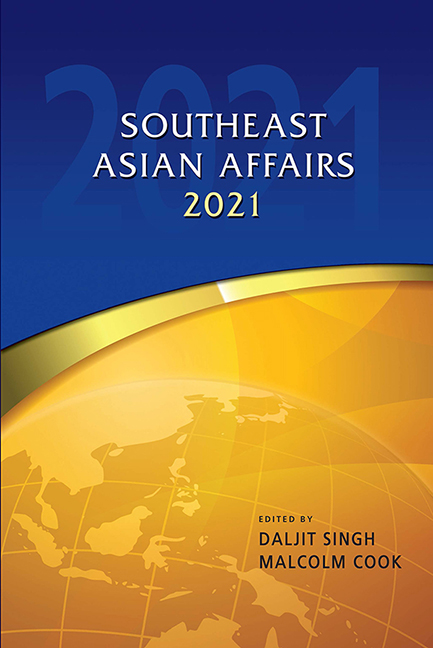Lao PDR in 2020: Pandemic, Debt and Resource Extraction
Published online by Cambridge University Press: 09 October 2021
Summary
The year 2020 has been the year of COVID-19. On 30 January, the World Health Organization (WHO) declared the outbreak of a novel coronavirus (later termed COVID-19) a public health emergency of international concern. The first signs of the virus had been detected just a month earlier, on 31 December 2019, in the Chinese city of Wuhan. By 11 March, two days after Italy entered a national lockdown to curb its exploding cases of the virus, the WHO declared COVID-19 a global pandemic. Less than a month later, on 4 April, there were more than a million reported cases of the virus. In another two weeks there were two million cases, and by 12 May there were more than four million reported cases (including 280,000 deaths) across 213 countries. At the time of writing, the Johns Hopkins Resource Centre (2020) records over forty-three million cases globally, and more than one million deaths.
Despite being a global hotspot for the transmission of epidemic-prone diseases—and particularly zoonoses—mainland Southeast Asia has performed remarkably well in its containment of COVID-19. At the end of October, Thailand had reported just 3,743 cases, Vietnam 1,169, Cambodia 287 and Myanmar (a more troubling) 46,200. There had been just 1,216 total reported deaths across the region, 1,122 of which were in Myanmar. Indeed, how the region has so dramatically outperformed many of the world's wealthiest countries in its containment efforts demands further analysis.
Even in a region that has performed exceptionally, Laos stands out. With just twenty-three reported cases and no deaths, Laos has the world's fifth-lowest COVID-19 numbers. Even more remarkably, Laos has achieved this case rate despite having five international borders, including a 423-kilometre border with Southern China and a 238-kilometre border with Myanmar. Given that Laos has a heavily constrained media landscape and limited testing and medical facilities, statistical data on COVID-19 must be treated with a degree of caution. But even if the real figures were five times the reported rate (as some medical experts have proposed could be the case in other countries), Laos would still be performing exceptionally well.
To respond to the pandemic, the government of Laos implemented a monthlong nationwide lockdown that began on 30 March, just six days after its first (two) reported cases.
- Type
- Chapter
- Information
- Southeast Asian Affairs 2021 , pp. 141 - 166Publisher: ISEAS–Yusof Ishak InstitutePrint publication year: 2021

